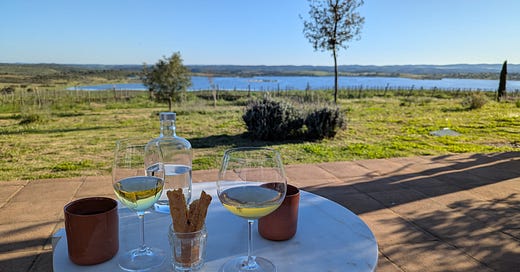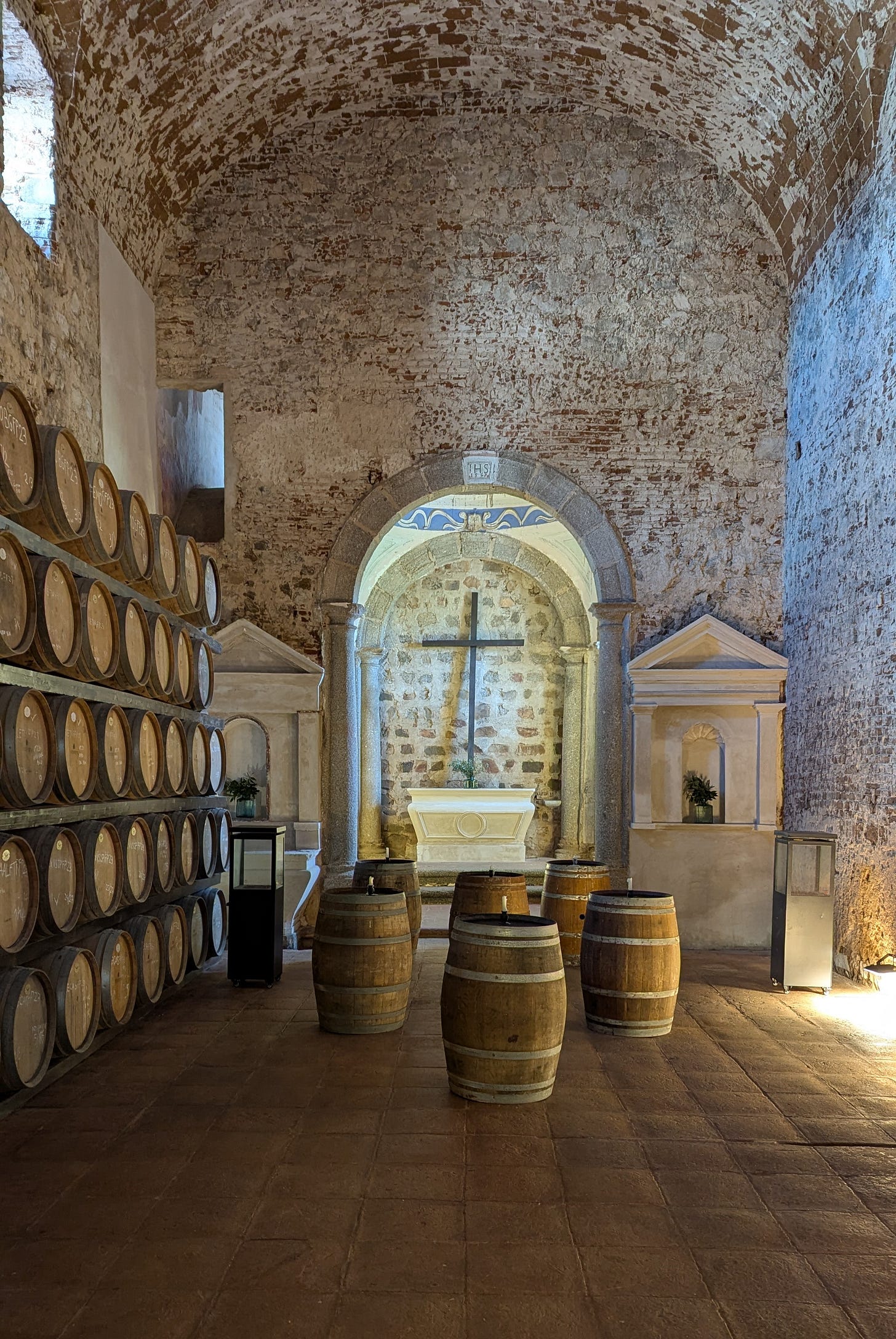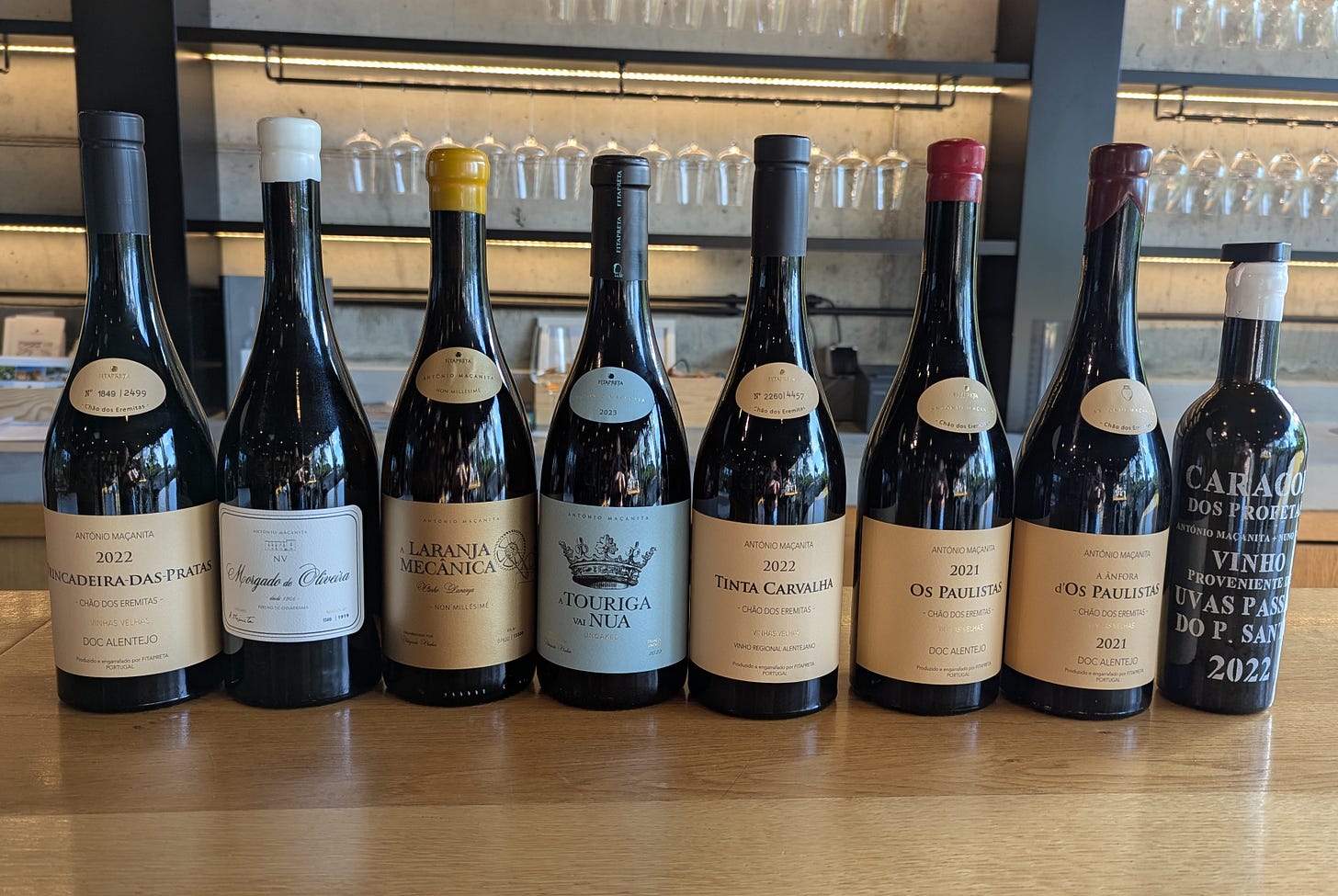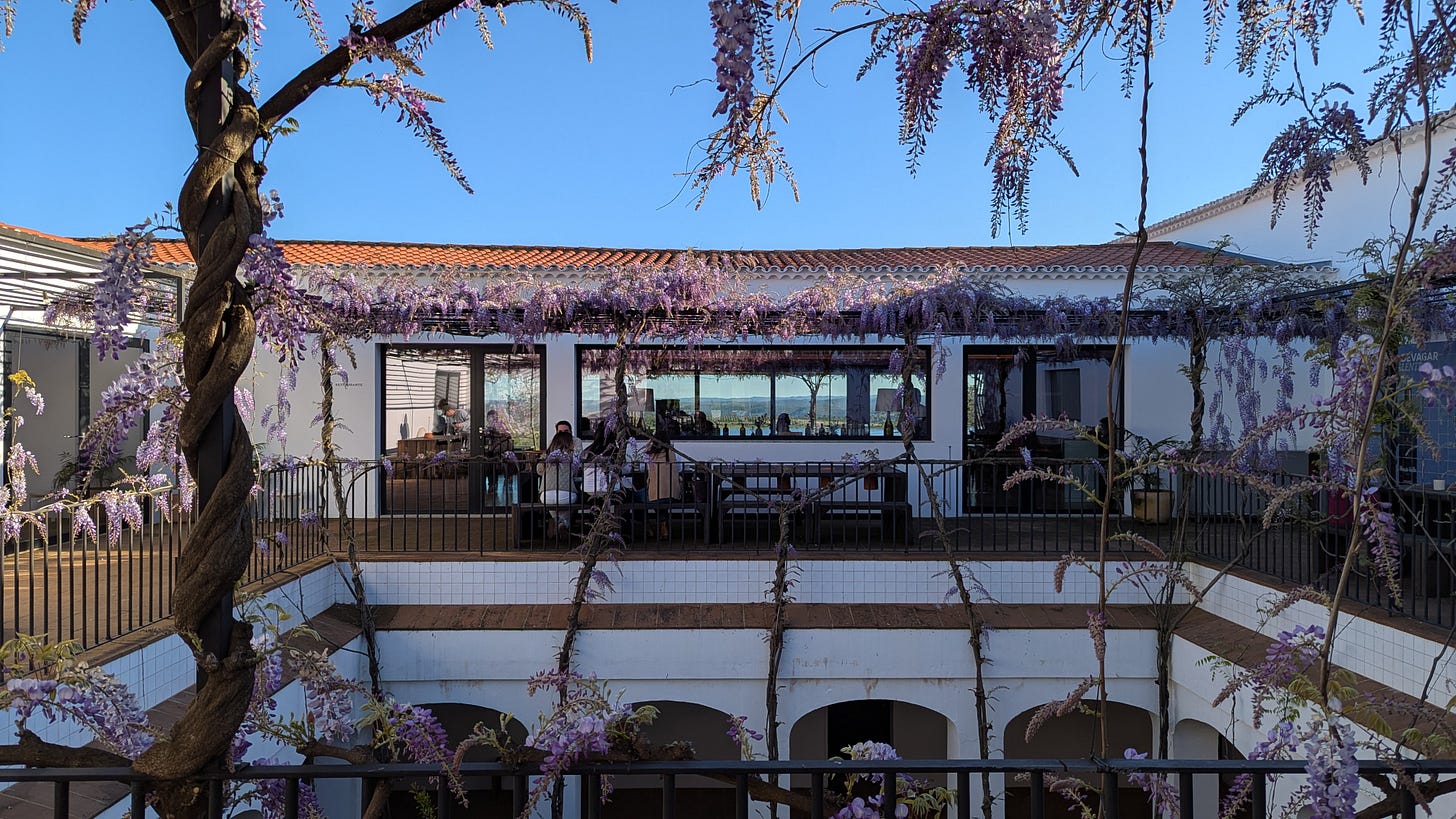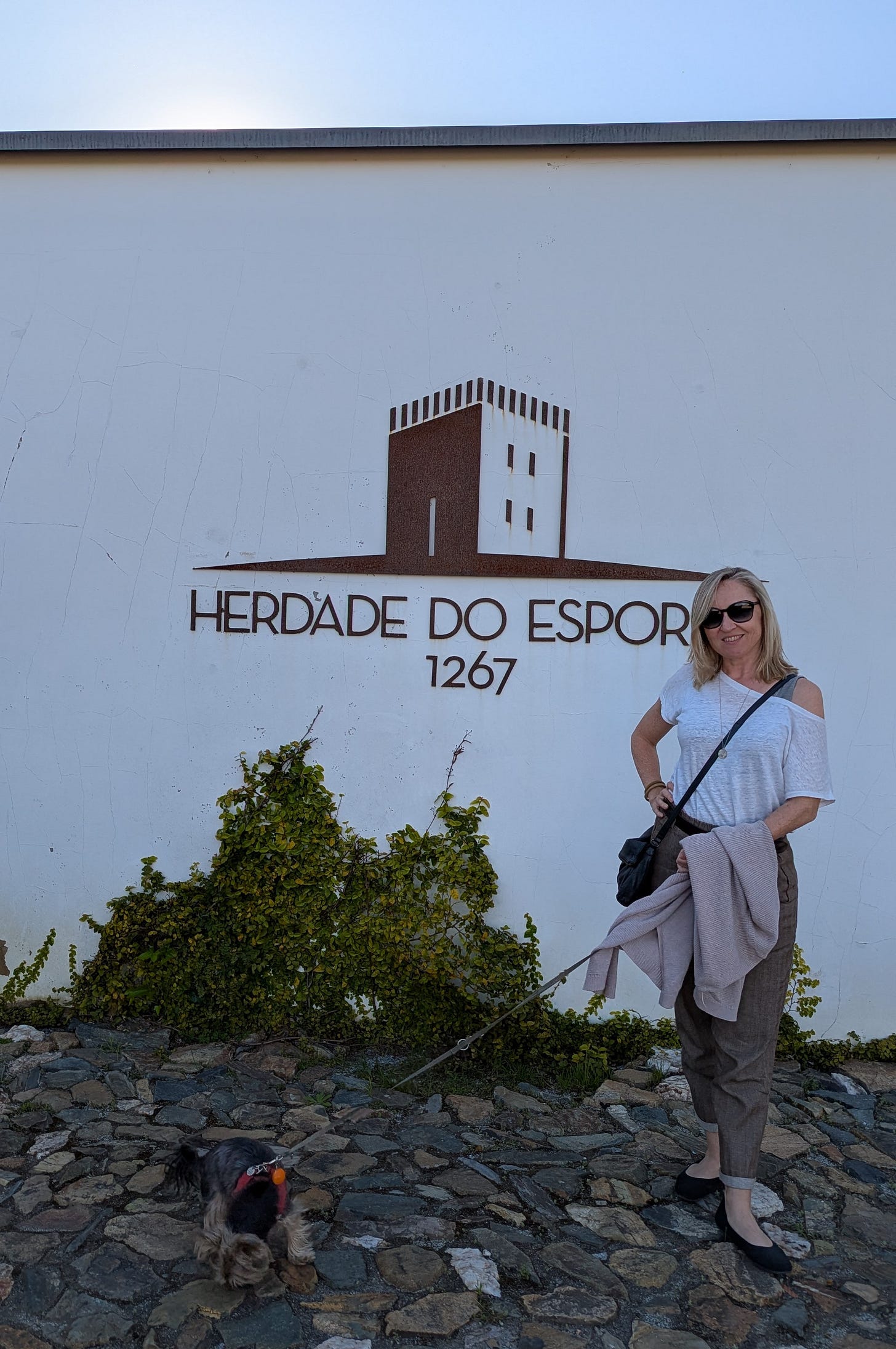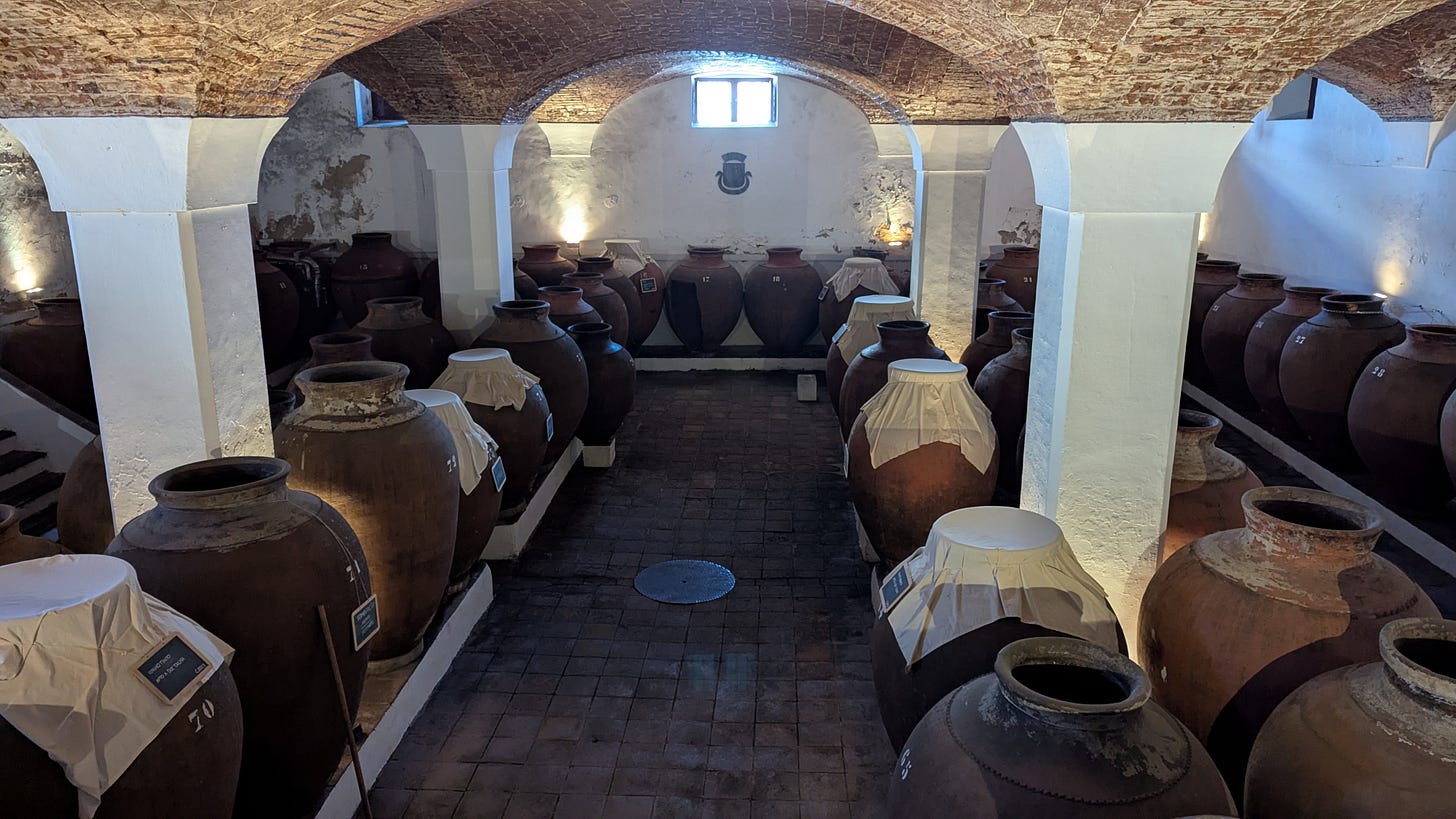While the Douro Valley might win Portugal’s prize for Most Majestic Wine Region, Alentejo has a quiet, understated charm that rewards those who take the time to get to know it. The landscape is open and undulating, with cork trees everywhere and vines growing over 250 native grape varieties (Portugal is second only to Italy in terms of its number of native grapes). The region is mostly hot and dry (supposedly – not much evidence of that these past few weeks!), which no doubt helps out with many wineries’ sustainability ambitions to produce more organic and biodynamic bottles. And its winemaking history dates back to Roman times – hence the tradition for fermenting and storing wines in giant clay vessels known as talhas (more about that in last week’s article on Portuguese wine trends).
Alentejo is also the biggest wine region in Portugal, with eight DOC sub-regions, so trying to cover them all in three weeks (not to mention in one article) would be pretty much impossible. Which is why I’m focusing specifically on the vicinity of Évora, which is where I was staying. And it’s also why I’ve decided to split this guide up into two parts: this article covers wineries around Évora, and next week I’ll cover wine bars, shops and other places to taste Alentejan wine.
Wineries around Évora
Driving through Alentejo, you’ll see brown signs representing the “Rota dos Vinhos” (wine route) that takes in 70 wineries along its way. I’m sure they’re all worth a visit, but given the limited time available I came up with my own little curated selection: seeking out places that represent both tradition and modernity, both small-scale boutiques and big (but organically certified) businesses. However, bear in mind that some of my research involved finding out a) which places are open on weekends (as I was working during the week) and b) which wineries would let me bring my dog – two criteria that are unlikely to apply to the average visitor!
Fitapreta Vinhos
I came across Fitapreta while researching wine in the Azores because the winery’s owner, António Maçanita, has a strong presence on Pico island as well. I was curious what he’s doing in Alentejo, so I was glad to discover that Fitapreta Vinhos is only around 10 kilometres from Évora and offers a range of tours and tastings. The buildings that make up the winery are absolutely steeped in history: a 14th century ruined palace has been renovated into the main barrel storage facility, complete with a medieval chapel featuring original frescoes that were only recently discovered (apparently Maçanita and team had some time on their hands during covid). But the fermentation tanks are housed in a cork-clad state-of-the-art warehouse that was only built in 2017. Fitapreta is the very definition of that oft-used phrase “where tradition meets modernity”.
The tour is as much an exercise in historical storytelling as it is in wine facts – history buffs will love it. At the end, you’ll settle into the industrial-chic tasting room for a flight of wines plus some local cheeses and charcuterie, plus more storytelling about the experimental techniques that have gone into the wines. Maçanita primarily uses semi-carbonic maceration, wild yeasts and not a lot of oak. But he also experiments with skin-contact whites (in the case of his Laranja Mecânica) and amphora-fermented reds (not technically classified as “Vinho de Talha” as they don’t follow the rules). There’s loads to tell, but I won’t spoil the surprises.
Herdade do Esporão
Esporão is one of the few names in Portuguese wines that I routinely see in the Netherlands and the UK (no doubt because they export to a whopping 50+ countries globally). Not only are they doing a great job commercially – they’re also certified organic, so it’s cool to see such a big wine business doing its bit for sustainability. Given Esporão’s size and export credentials, it’s perhaps no surprise that their Alentejo estate – located just outside Reguengos – feels monied. Tastefully monied, but still monied. I didn’t get to tour the winery itself (we had our dog with us and she wasn’t allowed inside) but I did wander through Esporão’s elegant restaurant, wine bar and inner courtyard, dripping with springtime wisteria.
A happy side effect of being banished from the interior, however, was getting to sit outside overlooking green swathes of vines, footed by a large lake, while enjoying a couple of glasses of wine. I’d tried the Esporão Reserva blends on several occasions, but I was excited to taste their Private Selection white: 100% Semillion grapes, fermented in French oak with six months of lees ageing. The 2022 that I drank had the vanilla richness and tropical acidity of a pineapple upside down cake (perhaps you had to have grown up in the UK several decades ago for this reference to make sense). The whole experience – the estate, the décor, the wines – felt very much like I was living my rich life.
Adega José de Sousa
In the heart of Reguengos town, you’ll find a true tribute to Roman winemaking at Adega José de Sousa – home to 114 huge talhas (clay vessels). The winery dates back to 1878 (although it was acquired by José Maria de Fonseca in 1986) and its history is everywhere in evidence. The numbered talhas themselves are impressive enough, but add to that the traditional lagares in which the grapes are foot-trodden and you get a genuine sense of how well Portugal has revived ancient Roman-era techniques.
At the tasting after the tour, we worked our way through six of José de Sousa’s wines – including the smoothly easy-to-drink “José de Sousa Reserva” red blend, the flagship “J” that’s only made in the best years (we tried the 2017 vintage), and the “Puro Talha” wines that are made 100% in clay talhas. Both the white and the red introduced me to grapes I’d never heard of (Sarigo and Moreto respectively) and were spicy and savoury with the odd oxidative note. An interesting tasting from an interesting winery.
Keep reading with a 7-day free trial
Subscribe to The Wine Edit by Truffles & Tannins to keep reading this post and get 7 days of free access to the full post archives.

